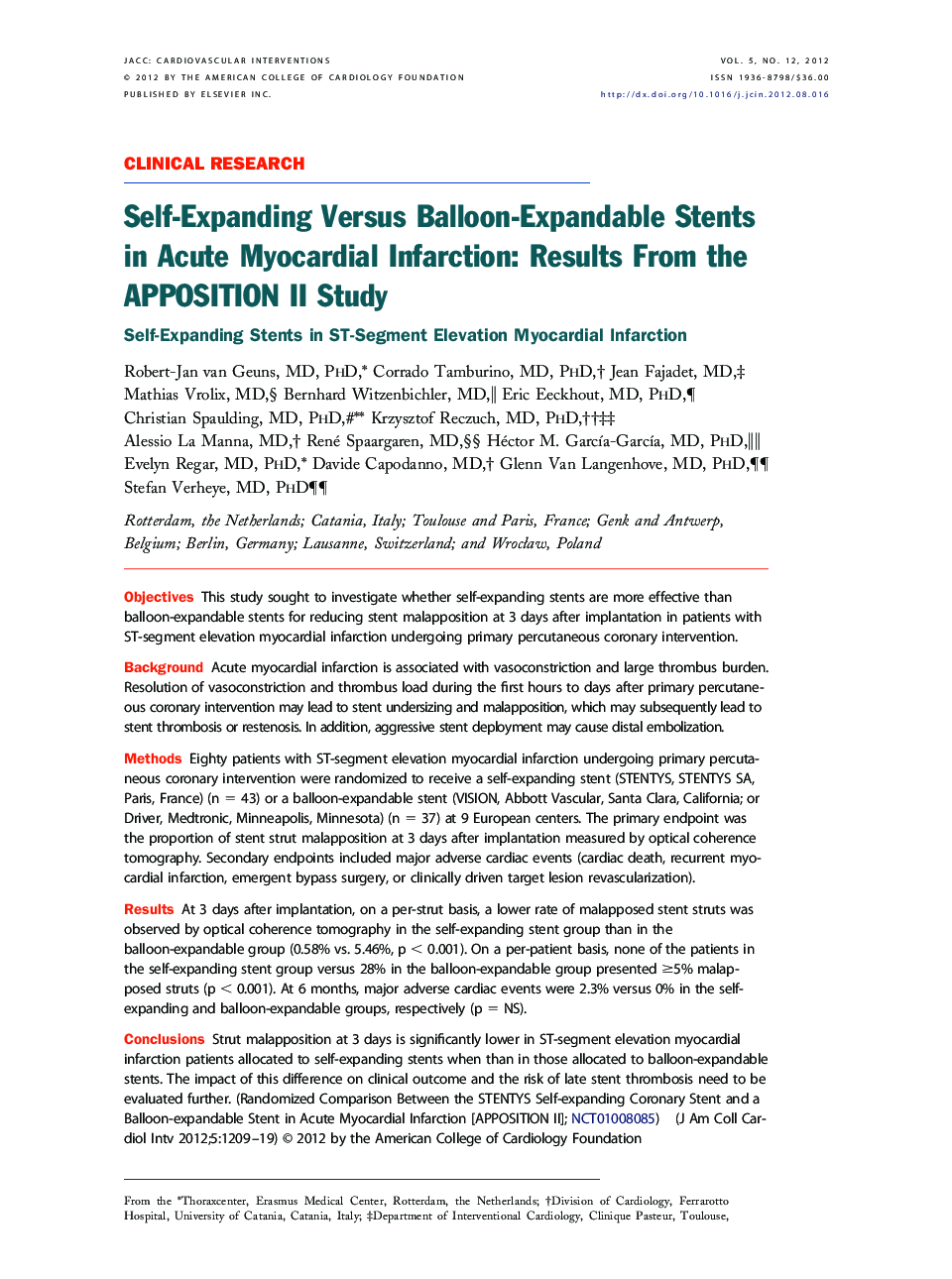| کد مقاله | کد نشریه | سال انتشار | مقاله انگلیسی | نسخه تمام متن |
|---|---|---|---|---|
| 2940766 | 1177042 | 2012 | 11 صفحه PDF | دانلود رایگان |

ObjectivesThis study sought to investigate whether self-expanding stents are more effective than balloon-expandable stents for reducing stent malapposition at 3 days after implantation in patients with ST-segment elevation myocardial infarction undergoing primary percutaneous coronary intervention.BackgroundAcute myocardial infarction is associated with vasoconstriction and large thrombus burden. Resolution of vasoconstriction and thrombus load during the first hours to days after primary percutaneous coronary intervention may lead to stent undersizing and malapposition, which may subsequently lead to stent thrombosis or restenosis. In addition, aggressive stent deployment may cause distal embolization.MethodsEighty patients with ST-segment elevation myocardial infarction undergoing primary percutaneous coronary intervention were randomized to receive a self-expanding stent (STENTYS, STENTYS SA, Paris, France) (n = 43) or a balloon-expandable stent (VISION, Abbott Vascular, Santa Clara, California; or Driver, Medtronic, Minneapolis, Minnesota) (n = 37) at 9 European centers. The primary endpoint was the proportion of stent strut malapposition at 3 days after implantation measured by optical coherence tomography. Secondary endpoints included major adverse cardiac events (cardiac death, recurrent myocardial infarction, emergent bypass surgery, or clinically driven target lesion revascularization).ResultsAt 3 days after implantation, on a per-strut basis, a lower rate of malapposed stent struts was observed by optical coherence tomography in the self-expanding stent group than in the balloon-expandable group (0.58% vs. 5.46%, p < 0.001). On a per-patient basis, none of the patients in the self-expanding stent group versus 28% in the balloon-expandable group presented ≥5% malapposed struts (p < 0.001). At 6 months, major adverse cardiac events were 2.3% versus 0% in the self-expanding and balloon-expandable groups, respectively (p = NS).ConclusionsStrut malapposition at 3 days is significantly lower in ST-segment elevation myocardial infarction patients allocated to self-expanding stents when than in those allocated to balloon-expandable stents. The impact of this difference on clinical outcome and the risk of late stent thrombosis need to be evaluated further. (Randomized Comparison Between the STENTYS Self-expanding Coronary Stent and a Balloon-expandable Stent in Acute Myocardial Infarction [APPOSITION II]; NCT01008085)
Journal: JACC: Cardiovascular Interventions - Volume 5, Issue 12, December 2012, Pages 1209–1219